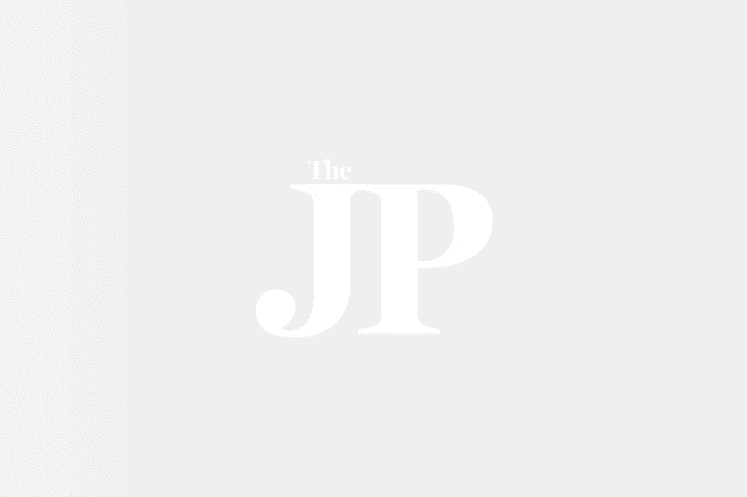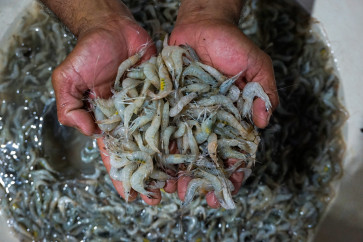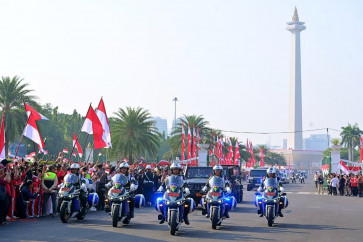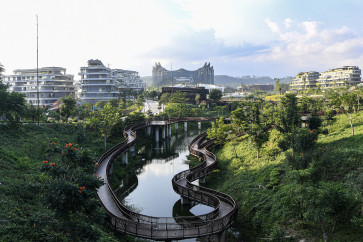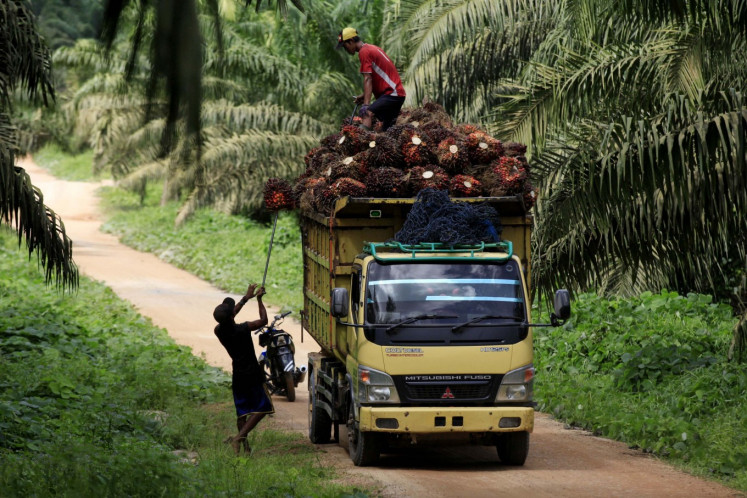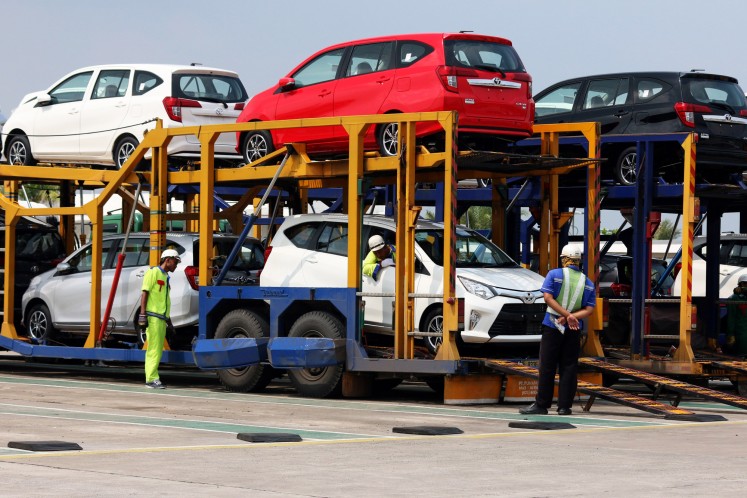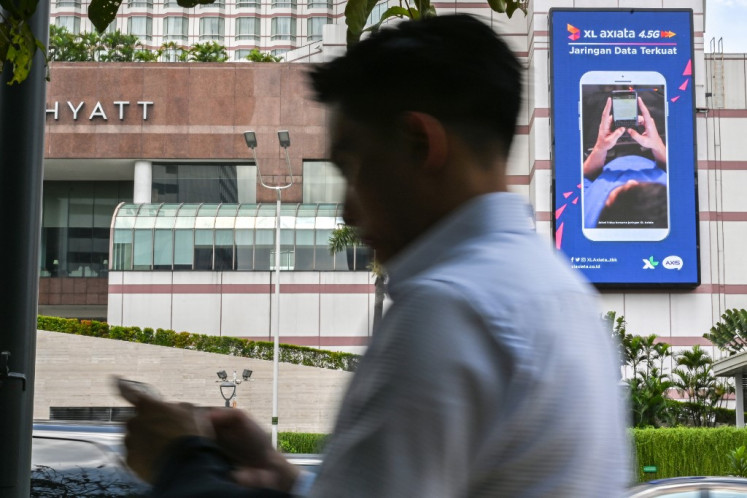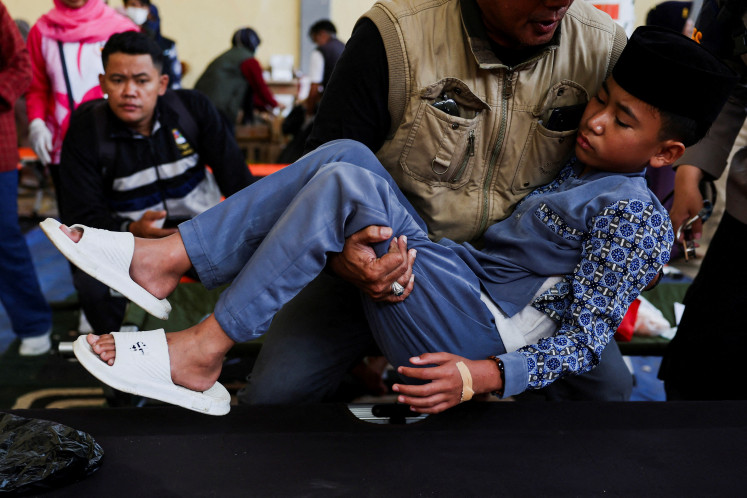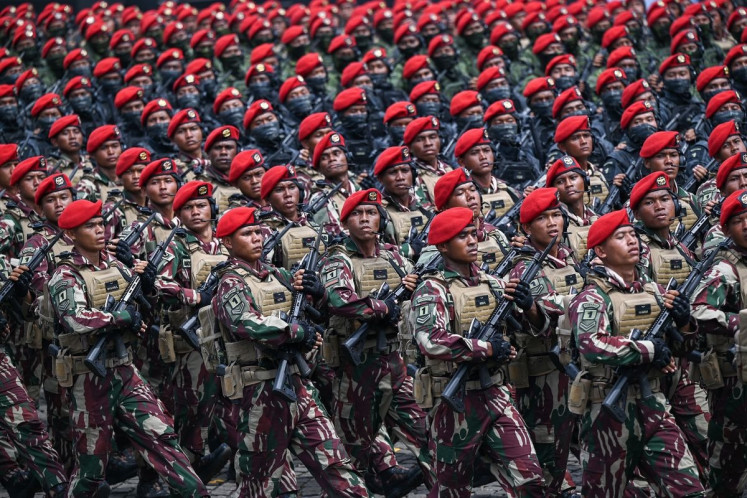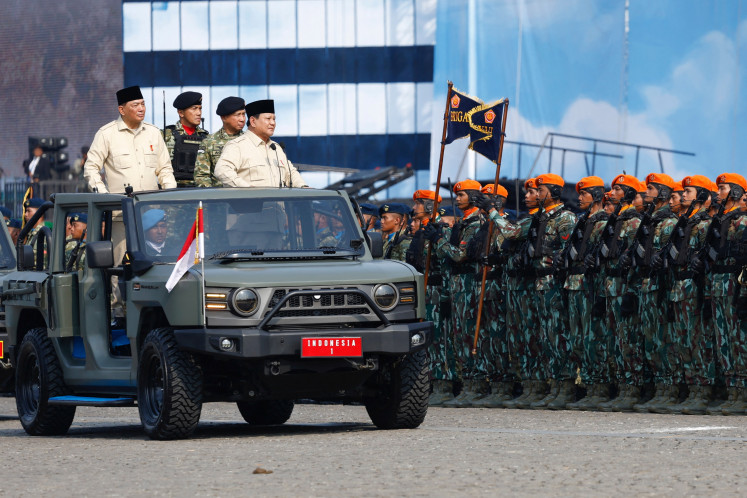Popular Reads
Top Results
Can't find what you're looking for?
View all search resultsPopular Reads
Top Results
Can't find what you're looking for?
View all search resultsFor Freeport, just follow Indonesia’s wishes
“Many citizens resented the mining company’s reminder that without US support for the UN-organized Act of Free Choice in Papua in 1969, the result of the referendum could have been damaging for Indonesia
Change text size
Gift Premium Articles
to Anyone
“Many citizens resented the mining company’s reminder that without US support for the UN-organized Act of Free Choice in Papua in 1969, the result of the referendum could have been damaging for Indonesia. Freeport’s presence in Papua at that time was reportedly the main reason for the US’ decision to make it possible to reunite Papua with Indonesia.” (The Jakarta Post editorial June 24, 2015).
Puncak Jaya, the highest mountain in Papua, before the 1960s was believed to be the largest gold and copper mine in the world. In March 1962, the United States’ State Department sent a telegram to Jakarta’s embassy saying that top American diplomat Ellsworth Bunker would facilitate top-secret high-level negotiations between the Dutch and Indonesian governments.
The Dutch, according to US/CIA declassified documents from 1962, “had to hand over West New Guinea [now Papua] to Indonesia regardless of Holland’s position.” The New York Agreement on Aug. 15, 1962, ultimately replaced Dutch colonialism with Indonesia’s rule over then West Irian.
The US policy shift against the Dutch in the 1960s was not necessarily for political and moral obligations toward Jakarta. It was not only a matter of the US’ own geopolitical economic interests but also its biggest worry over a continuing Indonesian shift toward communism should the Dutch hold on to Papua. On top of that, Washington had a “secret plan” for a long-term massive US investment in the territory.
Finally, under president Johnson’s administration, Indonesia’s foreign investment law was enacted on Jan. 10, 1967. The then Freeport Sulfur Company had the privileges and was the first to be licensed under president Soeharto’s government.
On April 5, 1967, the Indonesian government and Freeport Sulfur Company, through its subsidiary PT Freeport Indonesia, signed the first contract of work (CoW I). Accordingly, all subsequent difficult situations were supposed to have been resolved shortly thereafter, but were not.
Eight years elapsed; president Gerald Ford, accompanied by state secretary Henry Kissinger hosted president Soeharto at Camp David in 1975, one day after the US independence day commemoration. The two leaders shared three issues facing the two states, namely US military assistance to Indonesia, international investment and Portuguese Timor decolonization.
While the latter attracted world attention, Washington only focused on securing its investment in Indonesia. The question of East Timor was the second priority, no matter what was going on.
First of all, prior to the Camp David meeting, by March 1975 the US National Security Council was recommending “a policy of silence” regarding Indonesia’s intention to “incorporate Portuguese Timor by force”; secondly, Kissinger signaled Jakarta’s embassy that there would be no objection from the US side if Indonesia invaded East Timor; third, at the critical moment of the Soeharto-Ford meeting in Jakarta, one day before the invasion of Dili on Dec. 7, 1975, president Ford and secretary Kissinger gave the “green light” for the blitz; fourth, the US had no objection whatever Indonesia decided to do, as shown by State Department’s declassified documents.
Chery Seal wrote in 2002 that: “US state secretary Henry Kissinger might lose his ‘investments.’ Worse yet, the push for the independence of East Timor could easily spread into nearby Papua, threatening Soeharto’s other interests and Kissinger’s gold mine, in which Soeharto had a hefty share.”
From the US perspective, with Kissinger as state secretary, the prospect of East Timorese autonomy dismayed Soeharto because he and his friends had very valuable holdings in the region. In short, Washington tried to avoid confrontation with Indonesia simply because of the ongoing “secret” Freeport activity.
It later became clear that until the eighties Freeport had operated quietly. The Ertsberg mine was all but exhausted and died, leaving behind an open pit over 360 meters deep and 2 kilometers wide.
The discovery of the Grasberg mine was believed to be as advantageous for Washington’s top priority goals. But they decided to withhold the announcement of the new gold mining. Massive activity in the Grasberg mines was never announced to the public until 1988.
Freeport finally officially recognized gold mining in Papua, having previously (1973-1994) claimed it was only a copper miner. The total volume of gold mined during the 21 years has never been publicly known (Dewi Aryani/Antara news: 2011). While CoW I was signed in 1967, CoW II came into force on Dec. 30, 1991, and will end in 2021.
Over the last two years, the company has been heading toward a showdown with the Indonesian government. Today, this company is considering going to arbitration if it can’t resolve the dispute within the next 120 days. “It’s not just Freeport [that has such a right], the government does too,” the Indonesian minister of energy and natural resources said.
It is unlikely that the US government will initiate aggressively what it did in 1960s, although Freeport chief executive Richard Adkerson stated: “Millions of US citizens indirectly invest in Freeport with their savings accounts and their retirement plans […] so what happens […] will be a matter of interest for the United States’ government.”
______________________________
The writer is former Indonesian representative to UNTAET, Dili, and is currently senior adviser at the School of Social Sciences and Economics, Respati University, Yogyakarta.

